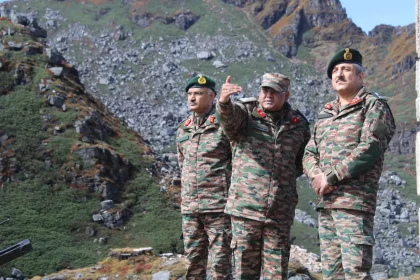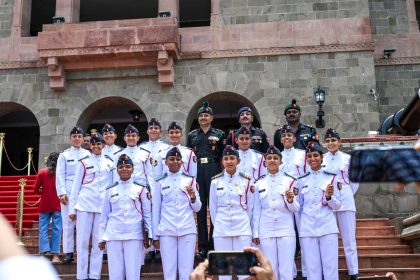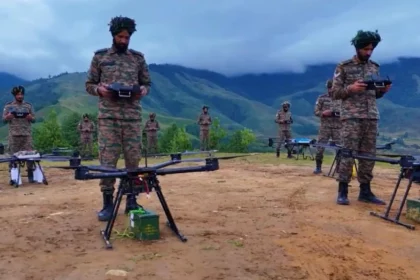Lt Gen Manraj Singh Mann Reviews Operational Preparedness in Forward Areas of East Sikkim
GOC Trishakti Corps Commends Troops for High Readiness Amid Challenging Terrain and Weather.
Bahawalpur Naan, Balakot Tiramisu: IAF’s Culinary Precision Strike on Pakistan
From Balakot to Bahawalpur, the IAF turned battlefields into banquets — serving precision, pride, and punch on a plate.
NDA Cadet Antriksh Kumar Singh Found Dead in His Room
The police identified the deceased as Antariksh Kumar Singh, who had joined the National Defence Academy in July this year.…
Pakistan Conducts Airstrikes in Kabul, TTP Chief Noor Wali Mehsud Feared Dead
First-Ever Airstrikes by Pakistan in Kabul Target TTP Leadership; Cross-Border Tensions Escalate, Noor Wali Mehsud Feared Dead.
UK Secures $468 Million Deal To Supply Lightweight Multirole ‘Martlet’ Missiles To Indian Army
India, UK Sign $468 Million Missile Deal: Martlet Missiles To Strengthen Indian Army’s Air Defence, Marking A New Era In…
Indian Army Launches Indigenous ‘SAKSHAM’ Anti-Drone Grid To Strengthen Air Defence
Indian Army Unveils AI-Driven Indigenous ‘SAKSHAM’ Anti-Drone Grid Developed With BEL To Strengthen Tactical Airspace Defence.






